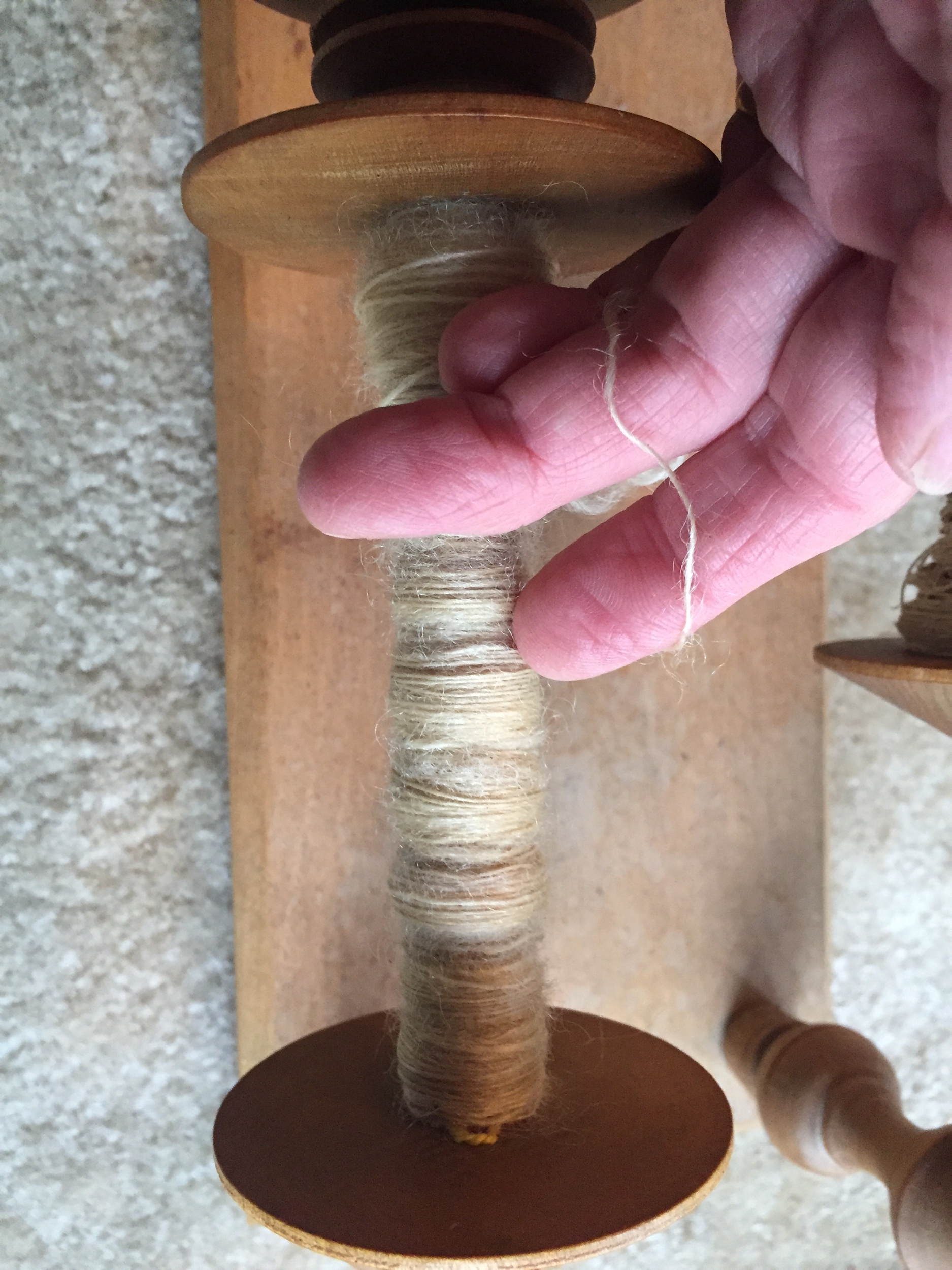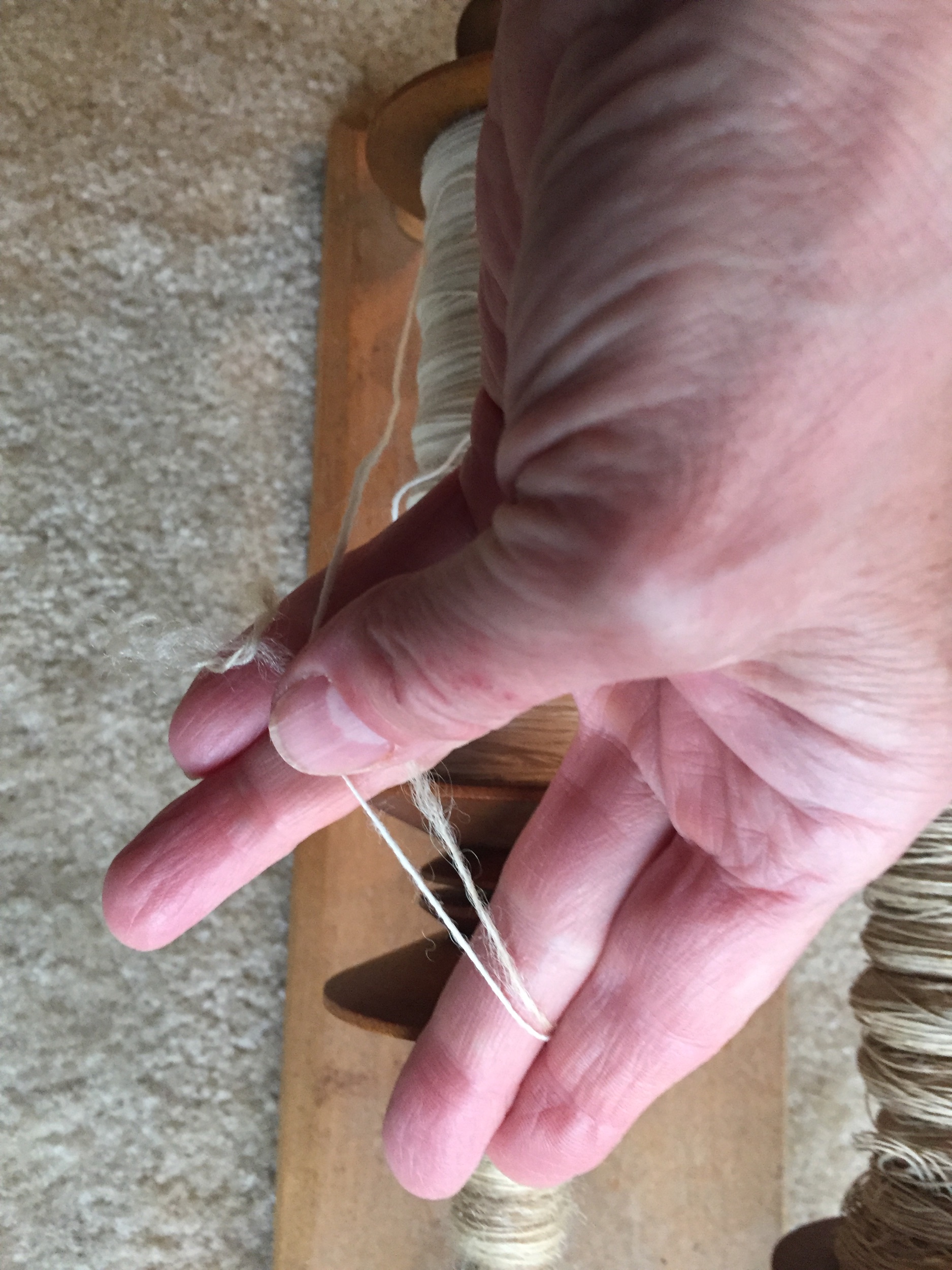Mum and I got three fleeces and some prepared roving at the sheep and wool festival, and we’re turning it into sock yarn! The plan is to do several slightly different yarns, using the three fleeces and some roving we bought from MSW, as well as some angora I had in stock. Each of the yarns is a three ply, and the goal is to figure out how to make a sock yarn that will hold up well to wear and not be too harsh. We’re using a lot of longwools, which are very durable but can also be scratchy. The first yarn used two fleeces and the roving, with a mix of twist directions.
Sock yarn #1
‘S’ twist Border Leicester, unwashed and spun from lock
’Z’ twist Perendale, unwashed and spun from lock
’Z’ twist Polwarth, washed pre-prepared commercial roving
These three singles were plied with a ‘S’ twist, increasing the amount of twist on the Border Leicester and decreasing it on the other two. The yarn was plied until it wouldn’t split easily when knitting, so it ended up unbalanced with a tendency to twist up on itself.
The singles
The first fleece is a Perendale. It’s a lovely dark, variegated colored fleece, not particularly fine. The staple length is around 6 inches, it doesn’t have too much crimp, and it is super clean, even though the sheep wasn’t coated. One of the nice things about longwool sheep is that they tend to be relatively free of vegetable matter and dirt-it falls right out. The only prep I did before spinning this was to flick the tips of the locks open, and I spun this straight from the locks. The breeder did an excellent job of including information about the breed, which was one I hadn’t heard of before. It’s a cross between Cheviot and Romney-a dual purpose meat/fleece breed, and comes in white as well as pretty colors like this.





The second fleece we got was a border leicester fleece, and my mum is spinning this one. Border Leicester is another longwool, and the fleece is beautiful. The staple length is just a bit shorter than the Perendale fleece, so around 5.5 inches. Mommy wanted to play around with making a different, more bouncy yarn, so she spun this single with a Z twist, while the other singles were spun with a S twist. She also spun this from the lock.


The last ply of this sock yarn is from Polwarth pre-prepared roving. The MSW festival had breed information and sample yarns and knitted swatches from various breeds, and the Polwarth stuck us as particularly soft. It typically has a staple length of 3-7 inches, with a fiber diameter of 21-26 microns. I’ve spun prepared polwarth/silk dyed roving, however I hadn’t spun pure Polwarth before. We wanted something soft since the longwools can be a bit harsh when spun finely, so I decided to use this Polwarth roving.

We then plied the two ‘S’ twist and the one ‘Z’ twist single together. After plying it, we washed it. The skein weighed 261.5 grams before washing, and 232.1 g after, so it lost 29.4 grams (11 %) of dirt and lanolin in the washing process. It isn’t a balanced yarn in the slightest, but I’m really excited to see how it knits up into socks!






